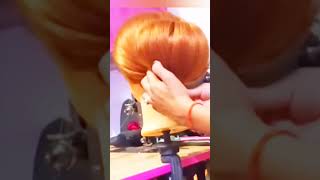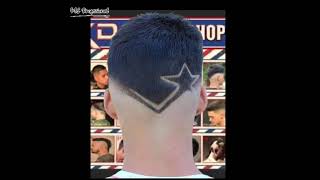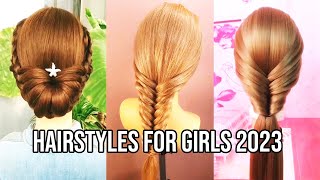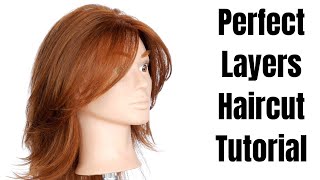Lumishine Product Knowledge Series...Chapter 2: Permanent Creme Color New
- Posted on 05 November, 2019
- Hair Knowledge
- By Anonymous
Ready to dive into color? In the second installment of the LumiShine Product Knowledge Series, Joico International Guest Artist and celebrated educator, Ricardo Santiago, will familiarize you with every facet of LumiShine’s Permanent Créme Color – a pre-blended color line that takes the guesswork out of formulation with every use. Featuring easy-to-grasp visuals and plenty of colorful examples, Ricardo takes your hand through the entire line. Get ready to learn…
• The tonal families and shade behaviors of the Permanent Créme color line
• Custom formulas for blondes, brunettes, and redheads
• How-to’s for using the extra-lift/high-lift series
• The benefits of referencing the simple-but-comprehensive LumiShine swatch book
For more tutorials and how to’s visit https://www.joico.com/education-on-dem...
Lumishine is a pre-blended color line, so what does that mean? That means we've taken the guesswork out of the formulation for you. So every time you're gon na get on target predictable results. So one of my favorite tools to use is the lumishine swatch book. It'S got a quick reference guide right when you open it up, and this is gon na, give you some great information about mixing and timing. Now. For me, I feel, like every case is a little bit different when a client comes into a salon. So I like to reference my swatch book when I'm trying to figure out exactly what color to use I've got my four main ones that are gon na, give me a hundred percent great coverage that are usually the ones that I go to right away. The first one is my natural series natural. What makes ours different versus anyone else is that it's a perfectly blended brown right. So it's not going to be too cool. It'S not going to be too warm. It'S just the right balance of primaries. That'S gon na really level out that brown tone now the next one that we've got is our natural ash. The natural ash is fantastic, because sometimes you have those clients that just always have a little bit of warmth that tries to push through well. Our ash is very nicely balanced and what that does? Is it cuts through that warmth and really levels them out so that you can end up with a nice cool tone afterwards, we also have our n WB series that stands for a natural, warm beige. I live in Florida and there's always gon na, be an underlying warmth that lives in everyone's hair from the sunlight from the environment. There'S always something that's gon na pull some of that out, so that beige that sits right at the end of the natural warm beige is gon na help to control that color. So I end up with a more balanced result: every single time our last color series that gives us 100 % gray coverage is our natural warm series. Our natural warm series is a nude palette and it lives perfectly between that natural, warm beige and the natural gold. So it's just a little bit warmer than the beige and not quite as warm as the ng. So now, let's get into the rest of our pre, blended colors. We start with our natural violets. The natural violet is perfect, because not every time do you need to cancel out warmth with green, so you still have that natural base, but the violet acts as your cooling canceling agent. Next, we have our ng series so now we're shifting on to the warm side of the spectrum and we're going to start with our golds. Our gold has more of a yellow undertone behind that natural base. So as we get warmer we're gon na move into our natural copper series, which then has more of an orange undertone from that natural copper, we move over to our natural red gold. A natural red gold has that perfect balance of the red and the gold mixed together, so it's a really beautiful, rich red and then from there we actually start to cool it off slightly in the red category and go into our natural red violets. These are also beautiful, like mahogany burgundy colors, now we're moving into our pure tone colors. Now the pure tone colors, they don't have that natural undertone. So these are going to be used more for, like a fashion type shade, so our violet violet, for example, the Vivi's. They have a really rich violet tone and they live in a darker brunette category. Next up we have our CCS, our copper, copper. Now these big difference between the natural, copper and the copper copper is that, obviously you don't have that end base. That'S gon na help to really tone that down. So this is a very kicked up version of a copper series that you're really gon na see some vibrant results on now we have our powerhouse Reds. These are your vibrant fiery, intense Reds that are gon na last up to 40 shampoos, and they have no background tones. That means that there's not going to be any kind of a natural or brown. That'S gon na drag it down. You'Re really gon na pump up the red tone in these colors. So now we're really gon na cool it off and we're gon na talk a little bit about the blue ash series. So the blue ash is gon na, be able to cut through any warmth that you're trying to fight through, say you have a client that has a lot of red in her hair or a lot of deep orange in your hair. Well, that silver blue base is gon na help to cut right through that, and it's going to give you the control that you need to balance that shade out perfectly in the end. Now, let's talk high lips, I feel like high lips is one of those categories that everyone gets the little jumbled up on. So let's break it down and make it easy. We have four different high lips. We have our xln, which has the natural base and xlb with a beige base and Excel a with an ash base, and all of those are going to give you four levels of lift. So it's recommended to be used level 6 and higher you're, going to mix that with 40 volume, and you can process up to 60 minutes. And I said there were four, but I only said three because the last ones a little bit, we have the excel. A a the reason we have the AAA is because it's a double pigment ash, so it doesn't give you more lift it just cuts through more warmth, so you're able to use this as low as a level 5 and you can still get the nice balance, lift That you will, with the other ones as well. So now, let's talk about one of my favorite things to do, and that's customized colors when you're customizing, your formulas, there's one golden rule that I really feel like. We need to point out first before we go too far into this, and that is you want to keep your color options to no more than three reason for that is. If you go with more than three colors that are pre blended, then what you'll end up doing? Is you start to brown out your formulas? So you don't want to go beyond that, because you lose the predictability and the reliability of the color that you're trying to achieve by putting in more natural than there needs to be. Our goal was to make lumishine as simple as possible, so we want to make it to where you really just need to grab, maybe one or two shades to mix together, and then that could be your quick, fast and easy application versus trying to mix too many Colors together and overcomplicating it so here are some of my favorite go twos if I want to create more of a plum shade, but I still have to have a little bit of great coverage. I'D love to combine the four n with a 4 V V. Okay, another one that I like to do is for more of like a cinnamon shade. Then I'll combine the natural warm series, usually in like a 6 MW and put that with a 6 C, see just a little bit of the CC, though, because you don't want too much for it to overpower the NW another. One of my favorites is for those cool brunettes. I love to combine the 5 n with the 5 ba. That combination is really going to help to cancel out any warmth, but you still get some great coverage with that and a perfectly balanced cool brunette, and we can't forget some of the most important colors right now, which are chocolates and caramels. My favorite go-to is for a caramel shade would be like 7nw mixed with a little bit of 7n C, because the copper and the natural warm really harmonized well together on this one and creates a perfect caramel and then just to make it more of a chocolate. You want to take it down a little bit, so you can mix like a 4 ng or a 6 ng with a little bit of the 4 or the 5 and W as well, depending on how deep of a chocolate you're trying to go.





Comments
Rochelle Lesuer: I love the way you keep the formulas simple! Yes! Thank you!
Amy Galvin: The 3 rule is great. Going beyond mixing 3 colors together can get really muddy.
The final Touch: Thanks for sharing
Marga De Claro: How much each lumishine coloring cream and the deloper or oxidising and how to order